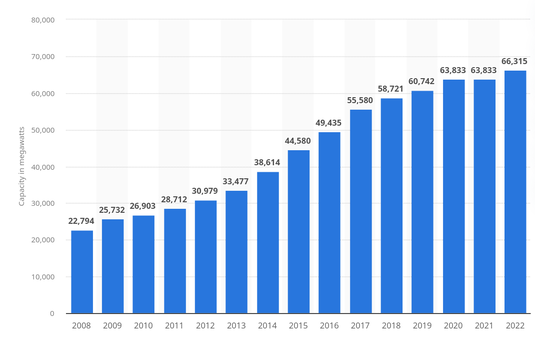this post was submitted on 02 Sep 2023
244 points (87.2% liked)
World News
32318 readers
1078 users here now
News from around the world!
Rules:
-
Please only post links to actual news sources, no tabloid sites, etc
-
No NSFW content
-
No hate speech, bigotry, propaganda, etc
founded 5 years ago
MODERATORS
you are viewing a single comment's thread
view the rest of the comments
view the rest of the comments

Can you explain to me how you adjust renewable to the demand ? How can you increase the amount of sun or wind in the evening when there is a peak of demand?
For the nuclear you can go from 100% to 20% or the opposite in less 30 minutes. It can also follow the load and have a variation of 5% in 30s.
https://archive.wikiwix.com/cache/index2.php?url=http%3A%2F%2Fwww.oecd-nea.org%2Fndd%2Freports%2F2012%2Fsystem-effects-exec-sum.pdf
100% to 20% in 30 minutes, huh? Even if that’s true - I doubt even a quarter of all nuclear power plants in use today can accomplish that - all wind turbines in the world can go from 100% to 0% in a matter of seconds, with no human intervention.
Wind turbines are actually surprisingly complex machines with many ways to control the power generation, for all important metrics: voltage, power, frequency, etc.
Essentially the main variables at play are rotational torque and rotor speed, and there’s a lot of ways to control those variables. For example, the rotor can be rotated to face the wind at the ideal angle, or the pitch of the blades can be tweaked. There are also components quite like those you’d find in a car - brakes, clutch, gearbox, etc. which control the rotor speed and rotational torque. All of these systems are intelligently controlled and responsive, and allow very fast response to changes in demand or weather conditions without human input.
Solar panels, similarly, can be angled - commercial solar farms are usually motorised. This is mostly done so the panels can track the sun, making them much more efficient, but it also means they can be angled away from the sun, if need be, to reduce output. In reality, this isn’t really done, because it’s easier to control wind - solar provides baseline power and wind builds on top of that and adds responsiveness.